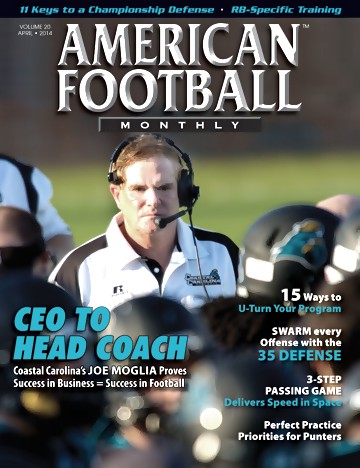Article CategoriesAFM Magazine
|
Managing your Program - Self Evaluation With Filmby: Keith GrabowskiOffensive Coordinator Baldwin-Wallace College © More from this issue Spring football begins soon around the country. While the format and limitations vary from state-to-state, there should still be a focus for both the players and coaches. The spring is a time where the sense of urgency is not as important as during the season. There either isn’t a game at the end of this period, or if there is, it’s at the end of several weeks of preparation. With that removed as a prime focus, development of a foundation for the fall is of utmost importance. Using film and teaching players how to evaluate their performance and technique now will pay big dividends when time for preparation, teaching, learning and evaluation have a weekly deadline during the season. Begin the process by developing detailed coaching materials. Most programs have some kind of editing system now. Even without an editing syste....The full article can only be seen by subscribers.
|
|
|||||||
| HOME |
MAGAZINE |
SUBSCRIBE | ONLINE COLUMNISTS | COACHING VIDEOS |
Copyright 2025, AmericanFootballMonthly.com
All Rights Reserved





